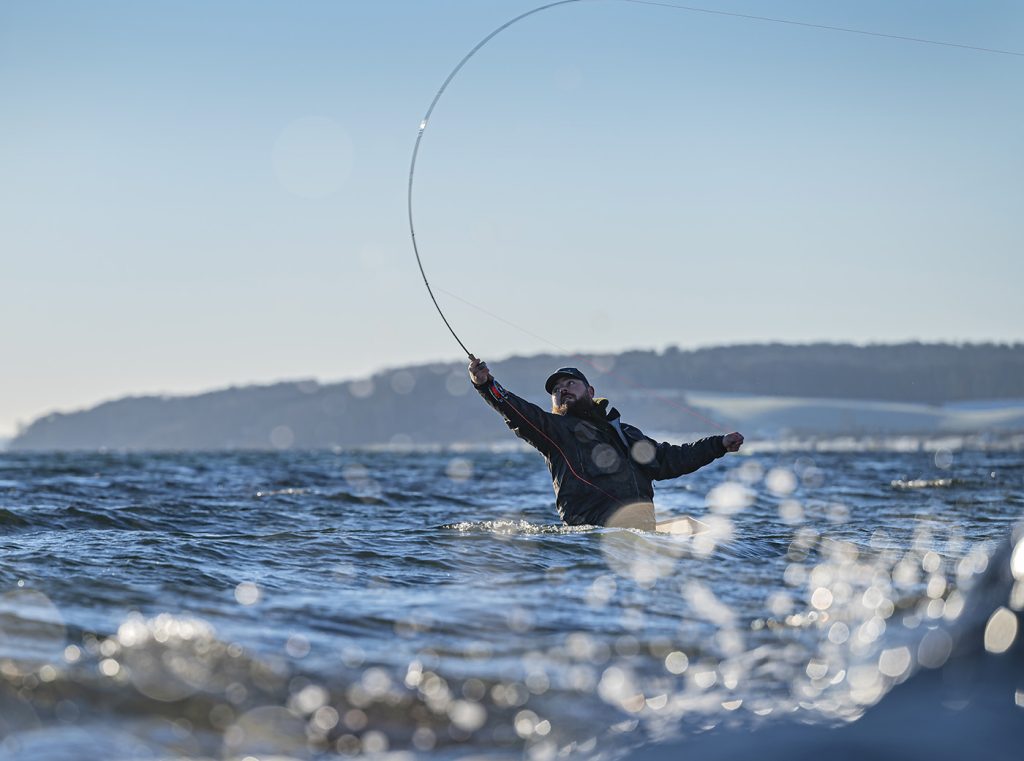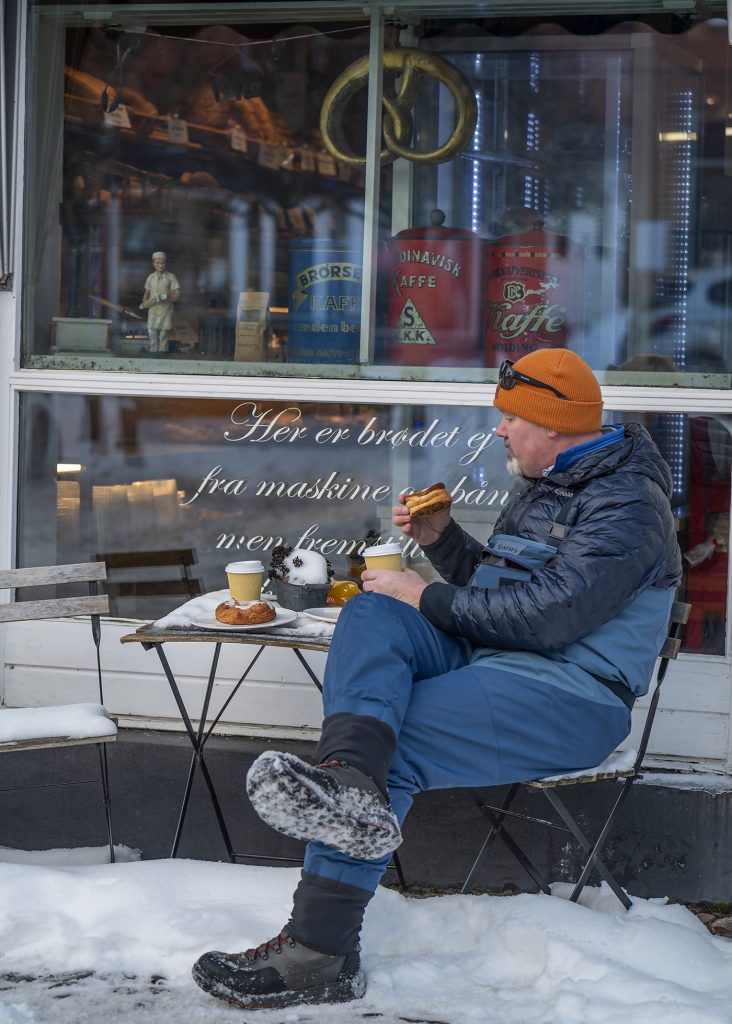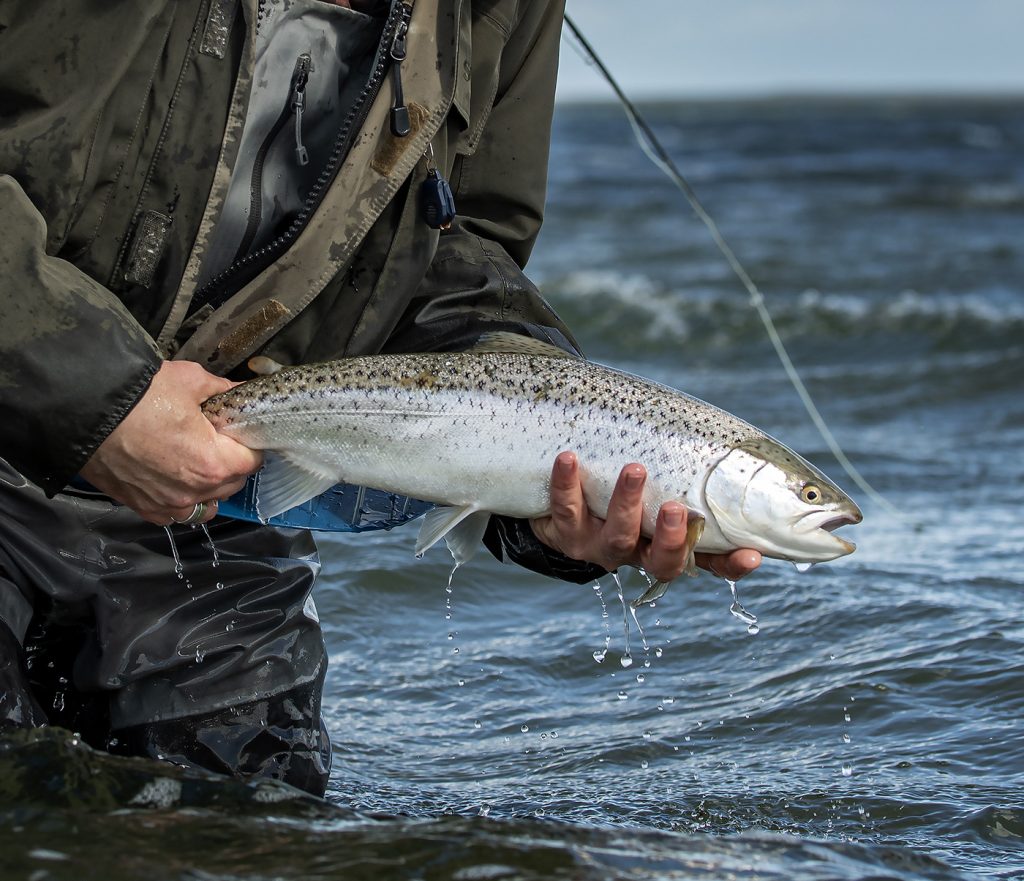
We’re lucky in Scandinavia that most winters are mild enough that we can fish through them. It happens every now and then the it’s cold enough to put a lid on, even in the salt. The shallower areas, where there isn’t much current (yet often good fishing) can freeze over and the same of course goes for our lakes. But even with very cold water, there’s always a chance. It’s slim, but if you never buy a lottery ticket you never win.
As the lakes cool off in the early winter fishing can actually be very, very good. It seems that pike and perch get ready for the cold season by trying to put some weight on. Pike can even be tempted with a fly in 1 degree warm (should I say cold) water.

The same is true for sea trout. The ones that don’t migrate up stream to spawn will need to feed all through the winter. The colder it is, the slower their metabolism so they eat less. They are still around, but obviously harder to catch when they’re not eating. You’ll typically meet either solitary larger ones, the elusive “springers”. The often quite big very shiny and beautiful trout that stay in the salt. Or smaller groups of trout, usually smaller ones. In good conditions they’ll enter shallow water, even if it’s very calm. Just a little sun can heat up the shallows enough to trigger a little more activity and that brings in the trout. The periods of activity can be short but if they show themselves, give it 10 minutes before casting to one. Often bigger trout hang out with smaller ones and if you’re lucky you’ll be able to spot the bigger ones amongst all the smaller ones.

Whatever you’re fishing for pike, perch sea trout or something else there’s one common denominator. It’s cold – and you won’t be fishing for long if you’re not staying warm. Staying warm when fishing (or during any other winter activity for that matter) means layers. Layers of clothes.
There are a few golden rules that’ll help in keeping you warm. The inner layer should be able to wick moisture away from your skin. You can get synthetic materials that do this, but wool does too. And wool is warmer. Several brands make very comfortable non-scratching soft wool garments (usually merino wool). Soft, not too thick, preferably wool closest to your skin. That goes for feet legs and upper body. Over this a thicker garment. I usually use a fleece, how heavy depends on how cold. If it’s very cold I’ll use to layers of fleece. Preferably bibs, which also covers your tors and prevents gaps between back and lower body. And over these, finally my waders and jacket. Here it’s important to remember another golden rule. Make sure it’s not too tight. If fleece is compressed, it insulates less. Wool is typically a little more “compression resistant”, but the same rule applies. This is worth considering when standing thigh deep in cold water – the water also compresses your insulation. One for final golden rule – windproof. Obviously your waders are windproof, but make sure your jacket is too. Oh, one more final-final rule – keep your head and hands warm. You lose a lot of heat from the head especially. Oh – and one more final-final-final rule. Avoid sweating. That’s where another benefit from layering comes ind. If you’re getting too warm open the jacket a little, lift the beanie a little. I very rarely wear gloves but if you do, maybe take off the gloves for a short while.
If you’re getting cold, get out of the water and take a brisk walk to get the blood circulating again. Maybe get out of the water a little more often and take a break. Hot tea or coffee is a bliss in the cold.

A final piece of advice is to dress in a way that minimises the risk of water getting in under your garments. That’s good in rain and snow, but certainly also if you slip and fall in. A belt around your waist and tight fitting cuffs on your jacket.

